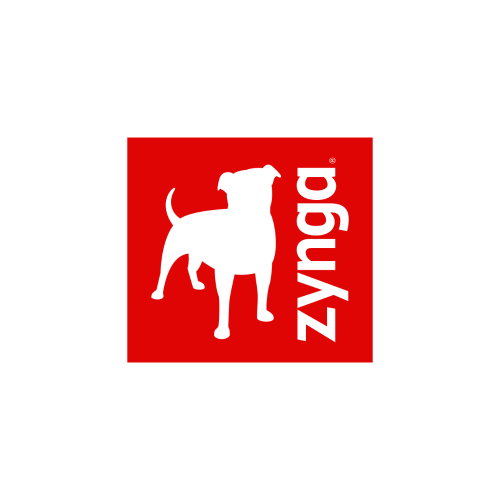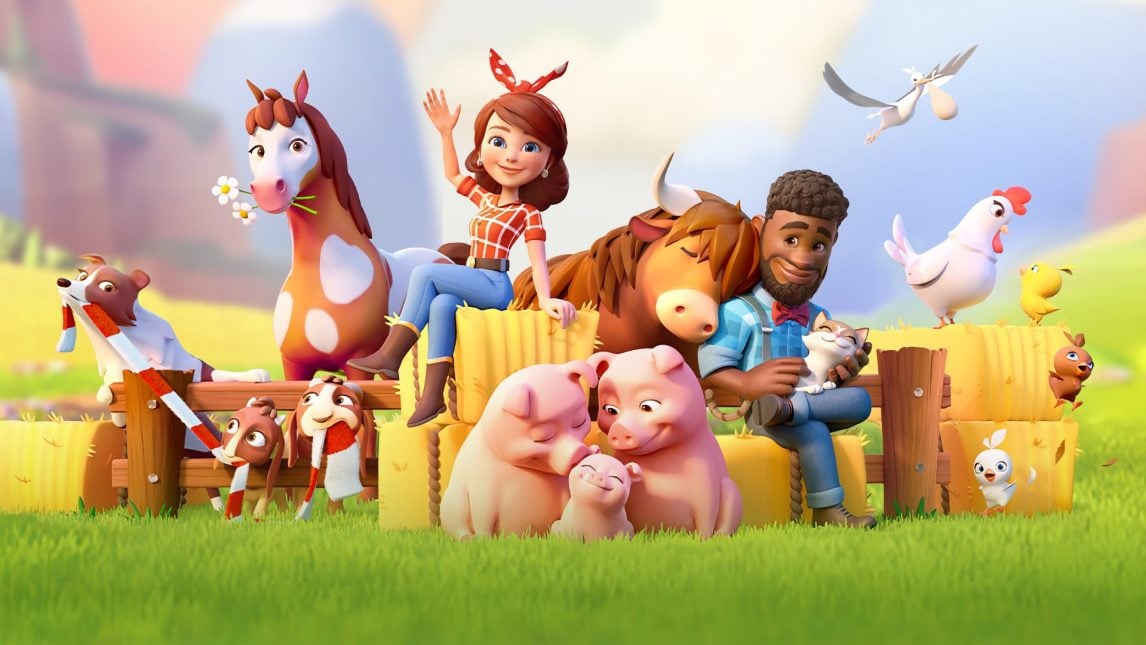
Zynga, known for pioneering popular Facebook games, started in 2007 with Mark Pincus at the helm. Their initial hits included cultural phenomena like FarmVille. However, changes in Facebook’s policies pushed Zynga towards mobile gaming, leading to significant company shifts, especially after Frank Gibeau became CEO in 2015. This move expanded their portfolio with fresh mobile content, pulling them back from a financial edge. Now a significant player in the global market with multiple offices, we’re diving into Zynga’s specifics, looking at the Zynga revenue statistics and Zynga market cap to understand their current standing in the industry.
Zynga key stats
Zynga, a big name in social gaming, quickly climbed the ranks with its strong presence on platforms like Facebook. They make money through microtransactions in their free-to-play games. By acquiring studios and constantly innovating within their staple franchises, Zynga maintains and grows its player base. Now, we’re taking a closer look at Zynga earnings to gauge their success and strategies in keeping players hooked.
Zynga’s net worth estimated at around $10.12 billion in 2022.
(Source: Companies Market Cap)
- In 2012, a year after the company started trading on NASDAQ, it had a market cap of $1.39 billion, doubling it in 2013 ($2.60 billion).
- However, this value plummeted from 2014 to 2016, even reaching $1.99 billion in 2016. 2017 marks Zynga’s revival, when its market cap reached $3.12 billion.
- In 2020, the market cap amounted to $10.64 billion, almost twice its value compared to 2019 ($5.81 billion). The market cap was around $7.16 billion in 2021.
- Online games brought in a total of $2.25 billion in 2021. It is, of course, a major increase since they generated $1.67 billion in 2020 and $1.05 billion in 2019.
- In 2021, revenue for the mobile market totaled $2.72 billion, while revenue for bookings (mobile) generated $2.74 billion. Mobile games were as successful in 2020, raking in $1.90 billion in revenue (96% of the overall annual revenue) and $2.20 billion in bookings – mobile (96% of the overall annual revenue).
- Mobile games in 2019 generated $1.25 billion in revenue (94.5% of the overall annual revenue) and $1.50 billion in mobile bookings (95.5% of the overall annual revenue).
Zynga, known for its free-to-play games, has consistently turned a profit, largely through advertising revenue. Ads often offer players bonuses or game continuations. The 2020 lockdowns greatly benefited the company, introducing many to casual/hypercasual games. Despite a return to normalcy in 2021, Zynga’s momentum persisted and even improved. Notably, the company has increased its investment in marketing, a shift from its earlier reliance on word of mouth.
Zynga reported 209 million monthly active mobile users in 2022.
(Source: Statista)
- Zynga reported 40 million daily active users on mobile in Q1 2022, up slightly from 37 million in the previous quarter.
- Zynga has shifted to reporting mobile-only audience metrics as web-based games have decreased in relevance.
The statistic of daily active users (DAU) refers to the number of individual players who engaged with one of Zynga’s games on a given day. If a player accessed multiple Zynga games or platforms in one day, they would be counted as more than one DAU. Zynga reported steady growth in this metric over recent quarters, reaching 40 million DAU on mobile games in Q1 2022. This focus on mobile DAU provides useful insight, as Zynga acknowledged on the page that web-based social gaming has decreased significantly in popularity and relevance in recent years.
In 2021, Zynga revenue was $2.8 billion.
(Source: Statista)
- This was the highest annual result yet
- It is significant improvement from the $1.98 billion in the previous year.
- Zynga generates the most of revenues through the in-game sales of virtual items.
Zynga relies heavily on in-game purchases of virtual items to generate revenue from its free-to-play games. This allows Zynga to offer its games to players without an upfront cost while still finding profitable monetization strategies within the games. Relying on in-app purchases is a smart business model for Zynga, as it has proven hugely successful in the mobile gaming industry. This model has clearly worked well for Zynga, as their revenues have steadily increased over time based primarily on virtual item sales within their portfolio of popular free-to-play titles.
Take-Two, the parent company of Rockstar, closed a deal to buy Zynga for $12.7 billion.
(Source: Protocol)
- Zynga has over 5,000 employees in total.
- 2021 recorded 39 million daily active users on mobile, up 41% year-on-year, and 184 million monthly active users (up 107% year-on-year).
- 2020 recorded 27.5 million daily active users on mobile and 88.75 million monthly active users (still on mobile). Q4’20 broke a record with 134 million monthly active users.
- 2019 recorded 20.75 million daily active users on mobile and 68.75 million monthly active users on mobile.
After Facebook’s gaming changes and Flash ban, Zynga pivoted to mobile, a move that proved fruitful, especially under Frank Gibeau’s leadership. They’ve mastered the art of balancing player satisfaction with profitability through non-intrusive ads. While Zynga dominates in casual/hypercasual games, they also offer casino games, some tailored for international users. A few games remain on Facebook, mainly casino-themed, but Words With Friends can still be enjoyed on Messenger.
After only a year since launch, Farmville was the most popular game on Facebook with 83 million monthly users.
(Source: Forbes)
- The number of daily active users was peaking at approximately 34.5 million. In less than two months after release, the game had already more than 10 million daily active users. But by the end of 2010, the number of monthly active users was down to 60 million.
- Even three years after its initial release, the original Farmville was still making 20% of Zynga’s online gaming revenue.
- At its peak, Farmville 2 (released in 2012) had 42.4 million monthly active users and over 8 million daily active players.
- On iOS US: in May 2022, Farmville 3 has been downloaded +200,000 times and generated a little over $1 million. It has the 124th spot in the Top Free Simulation Games on iPhone and the 70th spot on iPad. In the Top Grossing Games on iPhone category, Farmville 3 is 56th and 27th on iPad.
- On Google Play US: in May 2022, Farmville 3 was installed +400,000 times and made over $1 million. It is the 81st most downloaded free game (simulation) and the 9th top-grossing game (simulation).
Farmville was a pivotal game for Zynga and a trendsetter on Facebook. It introduced the concept of buying virtual goods with real money and emphasized social interactions, pushing players to collaborate. As one of Facebook’s first major time-consuming activities, it paved the way for many game mechanics we see today. While Farmville 3, launched in 2021, tried to tap into nostalgia, its performance was lukewarm. Nonetheless, Farmville introduced the casual gaming genre to many non-gamers, and despite early skepticism, the mobile gaming landscape today reflects its lasting impact.
To sum up
Zynga pioneered the casual/hypercasual game genre, targeting audiences less interested in AAA titles and more in simple, mobile games. Their games, starting with Farmville on Facebook, emphasized social connections, even fostering real-life relationships. While the gaming market has evolved with companies like Supercell introducing games like Clash of Clans, and action games like Garena, Fortnite, and PUBG dominating, the casual/hypercasual genre’s audience continues to grow. This genre’s success is evident from the numerous copycat apps emerging with any successful game. While Zynga faces competition, it remains influential, continuously innovating with new titles, IPs, and acquisitions of diverse studios to keep pace with the evolving market.
Sources
- “Zynga (ZNGA) – Market Capitalization”. Companies Market Cap, 2022, https://companiesmarketcap.com/zynga/marketcap/.
- “Zynga games mobile DAU”. Statista, 2022, https://www.statista.com/statistics/193422/daily-active-users-of-zynga/
- Statt, Nick. “The Maker Of Grand Theft Auto Just Bought Zynga In The Biggest Game Deal In History”. Protocol, 2022, https://www.protocol.com/bulletins/take-two-acquires-zynga.
- “Zynga Top Grossing Games 2021”. Statista, 2022, https://www.statista.com/statistics/215587/zynga-top-grossing-mobile-games/.
- “Zynga Most Downloaded Games 2021”. Statista, 2022, https://www.statista.com/statistics/223104/dau-and-mau-of-zynga-apps-on-facebook/.
- “Zynga annual revenue”. Statista, https://www.statista.com/statistics/273567/zyngas-annual-revenue/
- Kain, Erik. “‘Farmville 3’ Is Here, But Can It Compete In Today’S Mobile Market?”. Forbes, 2022, https://www.forbes.com/sites/erikkain/2021/11/04/farmville-3-is-here-but-can-it-compete-in-todays-mobile-market/.
- Chiang, Oliver. “Farmville Players Down 25% Since Peak, Now Below 60 Million”. Forbes, 2022, https://www.forbes.com/sites/oliverchiang/2010/10/15/farmville-players-down-25-since-peak-now-below-60-million/?sh=5a4c79f97729.
